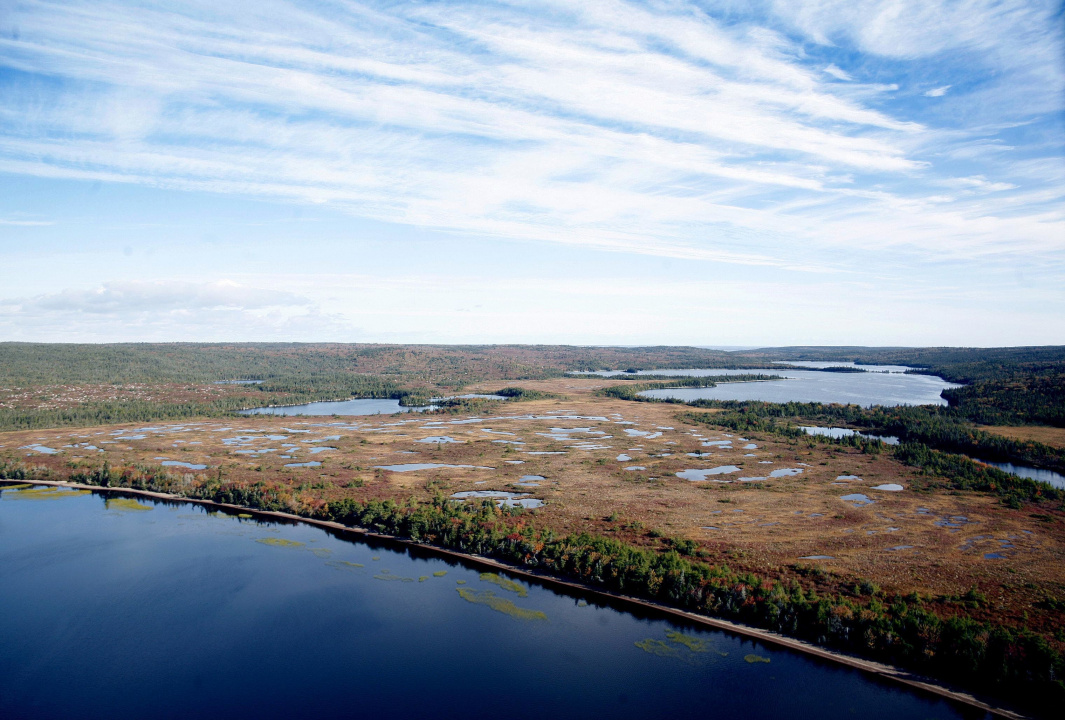Consultation on New Protected Areas Begins

An aerial view of the Bonnet Lake Barrens Wilderness Area (Communications Nova Scotia / File)
NOTE: The list of proposed protected areas follows the release.
Nova Scotians are invited to share their thoughts on 16 proposed new or expanded wilderness areas and nature reserves. Designating these sites will be one more step in helping Nova Scotia protect 20 per cent of its land and water by 2030.
“Nova Scotians cherish natural areas for the many benefits they provide,” said Timothy Halman, Minister of Environment and Climate Change. “We committed, in law, to protect 20 per cent of our land, water and wetlands by 2030 and are working hard to achieve this goal and maintain Nova Scotia’s reputation as a national leader in conservation. We are now inviting Nova Scotians to share their thoughts with us on 16 proposed new designations, which will protect an additional 1,820 hectares of nature.”
The Department launched an online survey today, July 19. Public input will be accepted until September 20. The survey is available at: https://www.novascotia.ca/nse/protectedareas/
The government is working in many ways to achieve its land protection goal. On December 20, 2023, Nova Scotia’s Collaborative Protected Areas Strategy was released. It is the road map guiding the Province, private land trusts, communities and the Mi’kmaq of Nova Scotia to collectively achieve the 20 per cent by 2030 goal. Many approaches are needed, including protecting more private land, continuing work to designate protected areas from the 2013 parks and protected areas plan, designating Indigenous protected and conserved areas and exploring opportunities for more effective area-based conservation measures.

An aerial view of the Fourchu Coast Wilderness Area (Communications Nova Scotia / File)
Quotes:
“We applaud the Province for advancing new protected areas across Nova Scotia, including recently acquired private lands. With over 70 per cent of Nova Scotia land privately owned, and biodiversity concentrated on these lands, we are delighted that the Province is joining the Nature Trust, other land trusts, and Mi’kmaw organizations in advancing private land conservation. Our unique collaborative approach in Nova Scotia, with diverse partners working together and integrating both public and private land conservation, is driving exciting protected-areas wins, including these 16 sites proposed for designation. Continued collaboration and protection of both public and private land will be critical to reach the ambitious 20 per cent by 2030 target, while ensuring that the 20 per cent includes our most ecologically important natural areas.”
— Bonnie Sutherland, Executive Director, Nova Scotia Nature Trust
Quick Facts:
- at this time, 13.6 per cent of the province’s land and water is protected
- these proposed sites were private land acquired by the Province of Nova Scotia through the Target 1 Challenge Fund, a five-year agreement between the Province and the Government of Canada with a goal to protect more land and water
- protecting more private land is one of the actions listed in the Collaborative Protected Areas Strategy
- the challenge fund agreement concluded on March 31 and was replaced with the Canada-Nova Scotia Nature Agreement, which will help to create new wilderness areas and nature reserves and support Mi’kmaq-led conservation, with a goal to protect 82,500 more hectares of land and water by 2026
Additional Resources:
Collaborative Protected Areas Strategy: https://www.novascotia.ca/nse/protectedareas/docs/collaborative-protected-areas-strategy-en.pdf
More information about wilderness areas and nature reserves is available at: https://www.novascotia.ca/nse/protectedareas/
Environmental Goals and Climate Change Reduction Act: https://nslegislature.ca/sites/default/files/legc/statutes/environmental%20goals%20and%20climate%20change%20reduction.pdf
Our Climate, Our Future: Nova Scotia’s Climate Change Plan for Clean Growth: https://climatechange.novascotia.ca/sites/default/files/uploads/ns-climate-change-plan.pdf
Parks and protected areas plan: https://novascotia.ca/parksandprotectedareas/pdf/Parks-Protected-Plan.pdf
Canada-Nova Scotia Nature Agreement: https://www.canada.ca/en/environment-climate-change/services/integrated-nature-initiatives/nature-agreements/canada-nova-scotia-nature-agreement.html
The proposed new designations are:
- Antigonish Nature Reserve (new, 48 hectares), Antigonish County
- Beaver River Nature Reserve (new, 97 hectares), Digby County
- Bonnet Lake Barrens Wilderness Area (addition, 53 hectares), Guysborough County
- Canso Coastal Barrens Wilderness Area (addition, 59 hectares), Guysborough County
- Caribou River Nature Reserve (addition, 40 hectares), Pictou County
- Chignecto Isthmus Wilderness Area (addition, 434 hectares), Cumberland County
- Diligent River Nature Reserve (addition, 31 hectares), Cumberland County
- Eigg Mountain-James River Wilderness Area (addition, 345 hectares), Antigonish County
- Five Bridge Lake Wilderness Area (addition, seven hectares), Halifax Regional Municipality
- Fourchu Coast Wilderness Area (addition, 255 hectares), Richmond and Cape Breton counties
- Middle River Wilderness Area (addition, 22 hectares), Inverness County
- Quinn Meadows Nature Reserve (addition, 151 hectares), Shelburne County
- Roseway River Wilderness Area (addition, 150 hectares), Shelburne County
- Ship Harbour Long Lake Wilderness Area (addition, 66 hectares), Halifax Regional Municipality
- Toadfish Lakes Wilderness Area (addition, 41 hectares), Halifax Regional Municipality
- Toy Makers Marsh Nature Reserve (new, 24 hectares), Digby County